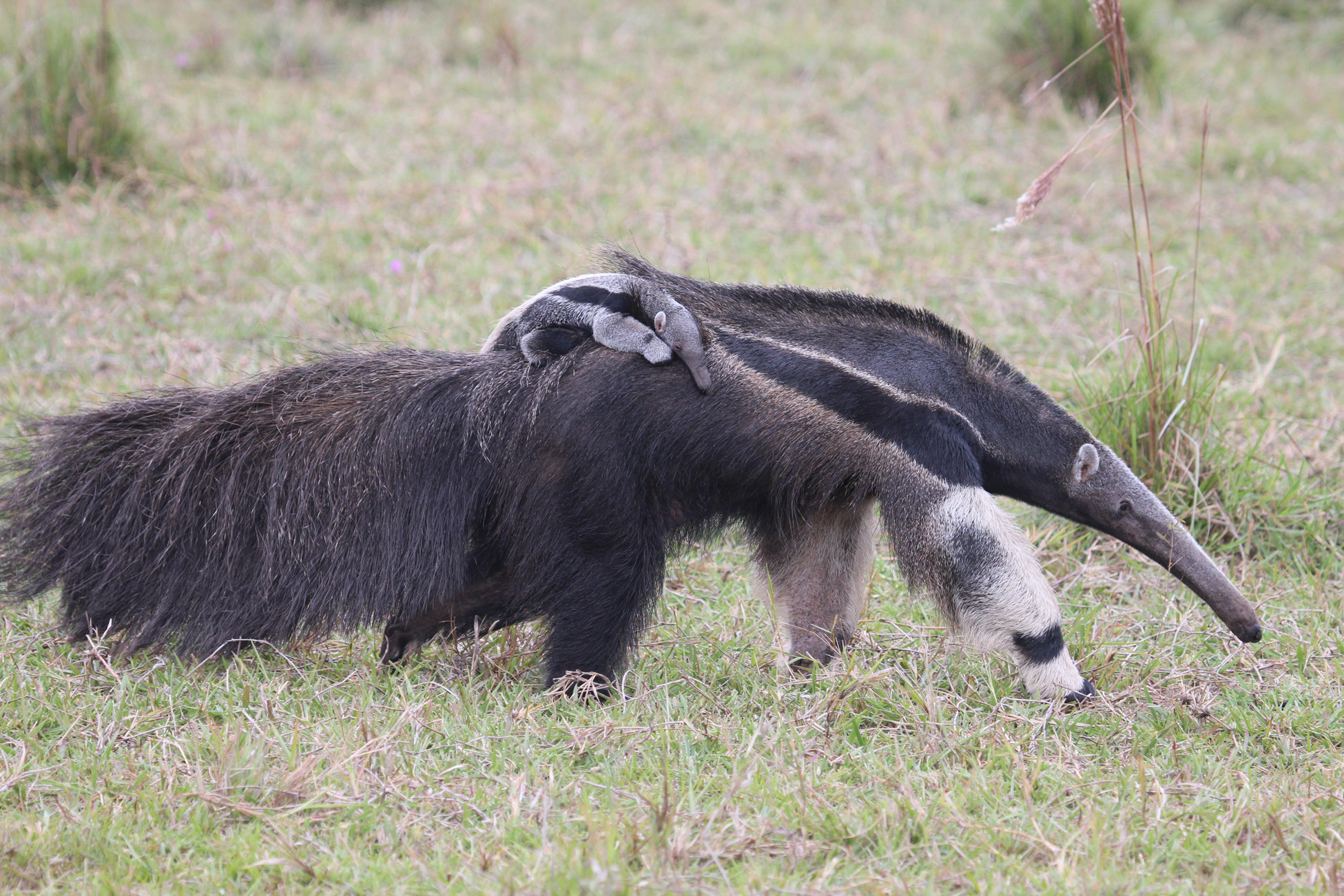
The giant anteater is one of the most unique and fascinating creatures in the animal kingdom. Reaching lengths of up to seven feet, it is the largest of all anteater species. With its distinctive appearance, long snout, and bushy tail, the giant anteater is easily recognizable. But there is much more to this remarkable mammal than meets the eye. In this article, we will explore 16 interesting facts about the giant anteater that will leave you in awe of this extraordinary creature. From its incredible feeding habits to its surprising communication methods, the giant anteater is sure to capture your curiosity. Let’s dive into the world of the giant anteater and uncover some fascinating secrets about this amazing animal!
Key Takeaways:
- Giant anteaters have unique physical features, like long snouts and distinctive fur patterns, and play a crucial role in controlling insect populations, helping to maintain the balance of their ecosystems.
- Despite their declining population due to habitat loss, giant anteaters are protected species with impressive abilities, such as consuming thousands of insects a day and using their long, sticky tongues to capture prey.
Unique Physical Features
Giant anteaters, scientifically known as Myrmecophaga tridactyla, are fascinating creatures with several unique physical features. They have long snouts, bushy tails, and sharp claws designed for digging into anthills and termite mounds. Their bodies are covered in coarse fur, and they have distinct black and white markings on their long, tubular-shaped heads.
Impressive Size
The giant anteater is one of the largest species of anteaters, measuring between 5 to 7 feet in length, including their tail. They can weigh anywhere from 40 to 140 pounds, with males being larger than females. Despite their size, they have a relatively lightweight body due to their slender frame.
Diet
Giant anteaters are insectivorous animals, primarily feeding on ants and termites. They use their long, sticky tongue, which can extend up to two feet, to capture their prey. An adult anteater can consume up to 30,000 insects in a single day!
No Teeth
One interesting fact about giant anteaters is that they do not have teeth. Instead, they rely on their strong jaws and sticky tongue to swallow their prey whole. Their stomach is specially adapted to handle the tough exoskeletons of insects.
Solitary Creatures
Giant anteaters are predominantly solitary animals, preferring to live alone rather than in groups. They have large territories that they mark by releasing a strong odor from glandular secretions. These territories can range from 1 to 10 square miles, depending on the availability of food.
Excellent Swimmers
Despite their large size, giant anteaters are surprisingly good swimmers. They use their long snouts as snorkels while swimming and can cross rivers and other bodies of water with ease. Swimming is not only a means of transportation for them but also a way to cool down in hot climates.
Slow Reproduction
Giant anteaters have a slow reproductive rate. Females usually give birth to a single offspring, known as a pup, every two to three years. The pup will ride on its mother’s back for several months until it is ready to venture out on its own.
Elongated Tongue
Their long, sticky tongue is a defining characteristic of giant anteaters. It is coated with sticky saliva to capture insects more effectively. Their tongues are so strong and flexible that they can flick it in and out up to 150 times per minute!
Nocturnal Animals
Giant anteaters are primarily nocturnal creatures, meaning they are most active during the nighttime. They have excellent night vision and sense of smell, which helps them navigate and locate their prey in the darkness.
Unique Defense Mechanism
When threatened, giant anteaters have a unique defense mechanism. They can rear up on their hind legs, using their strong tail for balance, and slash out with their powerful front claws. This display is often intimidating enough to discourage potential predators.
Declining Population
Giant anteaters are currently facing a decline in their population due to habitat loss and fragmentation. Deforestation and expanding agricultural activities are major threats to their survival. Conservation efforts are crucial to protect this amazing species.
Long Lifespan
Giant anteaters have an average lifespan of around 15 years in the wild. However, they have been known to live up to 20 years in captivity. Environmental factors and the availability of food sources can greatly influence their longevity.
Excellent Sense of Smell
Giant anteaters have an exceptional sense of smell, which they use to locate ant and termite colonies. They have a specialized organ called the Jacobson’s organ that allows them to pick up on chemical cues given off by their prey.
Important Ecosystem Role
Giant anteaters play a vital role in their ecosystems by controlling insect populations. Their voracious appetite for ants and termites helps regulate the populations of these small but highly abundant creatures. Without them, insect populations could explode and potentially disrupt the delicate balance of the ecosystem.
Protected Species
Giant anteaters are protected by several laws and international agreements due to their vulnerable status. They are listed as “vulnerable” by the International Union for Conservation of Nature (IUCN) Red List. It is illegal to hunt or trade them without appropriate permits.
Captivating Swirls
Giant anteaters have uniquely patterned fur, with each individual showing distinct swirls and patterns. Similar to a human fingerprint, these swirls are specific to each anteater and can be used for identification purposes.
In conclusion, the giant anteater, with its fascinating physical features and intriguing behavior, is truly a remarkable animal. Its impressive ability to consume thousands of insects in a day and its role in maintaining ecosystem balance make it a key player in its environment. While facing various challenges to their population, efforts to protect and conserve this species are vital to ensure its survival for future generations to appreciate and admire.
Conclusion
In conclusion, the giant anteater is a fascinating creature with unique characteristics and behaviors. From its long snout and sticky tongue to its impressive ability to consume massive amounts of ants and termites, this remarkable animal has captured the curiosity of many. With its strong claws and distinctive patterned coat, the giant anteater is well-adapted to its natural habitat. However, despite its intriguing features, the giant anteater is faced with numerous threats, including habitat loss and poaching. It is crucial for us to understand and appreciate these incredible creatures, and work towards their conservation. By protecting their natural habitats and raising awareness about their importance, we can ensure the survival of the magnificent giant anteater for generations to come.
FAQs
Q: What is the size of a giant anteater?
A: Giant anteaters can grow up to 7 feet long, including their long tails, and can weigh between 60 to 90 pounds.
Q: How do giant anteaters catch and eat ants?
A: Giant anteaters have a long snout and a sticky tongue that can extend up to two feet. They use their strong claws to break open ant nests and then use their long tongue to lap up the ants.
Q: What is the primary habitat of giant anteaters?
A: Giant anteaters are primarily found in the grasslands, savannas, and tropical forests of Central and South America.
Q: Are giant anteaters social animals?
A: Giant anteaters are generally solitary animals, except during mating season. However, they may tolerate the presence of other giant anteaters in their range.
Q: Are giant anteaters endangered?
A: Yes, giant anteaters are considered vulnerable to extinction due to habitat loss and hunting. It is important to protect their natural habitats and reduce human-wildlife conflict to ensure their survival.
Discover more about giant anteaters and their fascinating lives in South America. Explore additional anteater facts, delving into their unique adaptations and behaviors. Learn about South America's diverse wildlife, landscapes, and ecosystems. Giant anteaters are just one of many endangered species facing threats to their survival. Read our article on 13 astonishing facts about endangered species to gain insights into conservation efforts and the challenges these animals face.
Was this page helpful?
Our commitment to delivering trustworthy and engaging content is at the heart of what we do. Each fact on our site is contributed by real users like you, bringing a wealth of diverse insights and information. To ensure the highest standards of accuracy and reliability, our dedicated editors meticulously review each submission. This process guarantees that the facts we share are not only fascinating but also credible. Trust in our commitment to quality and authenticity as you explore and learn with us.


